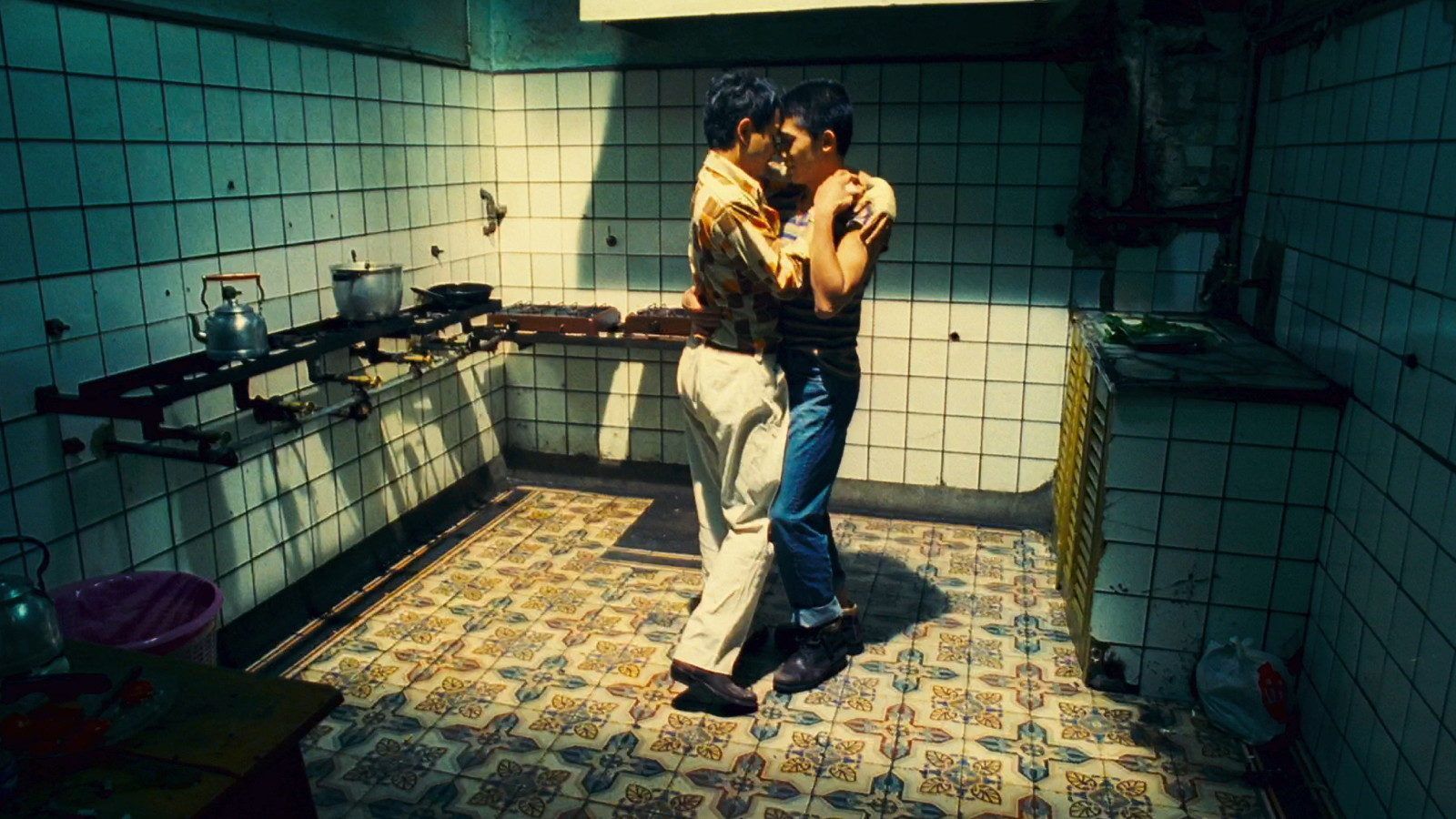
Happy Together
Essential Viewing
An affecting portrayal of diaspora, gay love, and the Sisyphean struggle towards intimacy.
Eric Yip
In her debut collection, the British-Chinese poet Sarah Howe writes, “Something sets us looking for a place. Old stories tell that if we could only get there, all distances would be erased.” It is this sense of unfulfilled yearning that threads through Wong Kar-Wai’s oeuvre and my favourite film of his, “Happy Together”.
“Happy Together” tells the story of Ho Po-Wing (Leslie Cheung) and Lai Yiu-Fai (Tony Leung), two men from Hong Kong gridlocked in a tumultuous relationship. The couple travel to Argentina in search of a new start, but they break up after getting lost on their way to Iguazu Falls. Lai works as a doorman at a tango bar in Buenos Aires, and Ho as an escort for customers. The two reconcile after a badly beaten Ho shows up at Lai’s place. Their relationship is rekindled as Lai nurses Ho back to health but turns sour once again after Lai befriends Chang (Chang Chen), a young and dreamy Taiwanese co-worker of ambiguous sexuality. The story fractures in the third act as Chang leaves for Taipei, while Lai and Ho wrangle with heartbreak, homesickness, and ennui.
Mythical destinations have always been a hallmark of Wong Kar-Wai’s films, where the tracks of lovers briefly intersect but always fail to converge. Iguazu Falls is the perfect symbol for Lai and Ho’s relationship: untempered, pulled towards destruction by an inescapable force. The suffocating framing throughout the film echoes this, caging the two in closeups, doorways, and smudged mirrors. After an initial black-and-white section, the colours are blown wide open with cinematographer Christopher Doyle’s high-contrast yellows and blues. The effect is trance-like, lurid even, signifying our entry into a world where every emotion is heightened and exposed.
Even as much as their saga is marked by mutual failures, there remains a deep well of genuine love threaded through the film. Lai and Ho are shown practising the tango over and over again. These are tender moments: we witness the effort they make towards harmony and synchronisation, how they alternate between separation and togetherness, accompanied by the melancholic bandoneons of Astor Piazzolla’s “Tango Apasionado”. Episodes of bickering are followed by vignettes of Lai cooking meals for an injured Ho, or Ho playfully nestling up against Lai. The hurt they inflict upon each other are deepened by these glimpses of a fulfilling relationship. Throughout the film, there are many shots of a lamp in Lai’s apartment that shows a view of Iguazu Falls, complete with a rotating screen to simulate the flowing of water. But this simulation remains just that: an illusion. The characters’ gaze gravitates towards the lamp as if it were a siren song, and we are once again reminded of the painful distance between the reality of our present against the possibilities of what we long for.
All this on its own would have been enough to place “Happy Together” as one of the greatest queer love stories in modern Asian cinema. However, what further elevates this film is its portrayal of alienation and displacement. The story takes place in 1997 on the eve of Hong Kong’s handover to China, an era marked by both transition and opposition. Passports, perhaps one of the most universally recognizable symbols of transit, play an important role in the story. Not only are Ho’s and Lai’s passports the opening shot of the film, Lai also hides Ho’s passport as a possessive gesture to force him to stay. The choice of location is also ingenious. Argentina is the antipode of Hong Kong—the two are on exactly opposite sides of the earth. In one scene, Lai ponders what an “upside-down Hong Kong” would look like, followed by vertically flipped tracking shots of Hong Kong’s cityscape. Despite how important Hong Kong is to the two main characters, this disorienting and surreal montage is the only glimpse we get of the city. The idea of home is liminal and elusive, imbuing the story with a sense of separation that cannot be named.
Sandwiched between the famous “In the Mood for Love” and the iconoclastic “Fallen Angels”, “Happy Together” occupies a strange place in Wong Kar-Wai’s filmography. It represents a marked change in style for the auteur, leaving behind gritty and fractured narratives in favour of simple, linear storytelling. Despite this, it remains my favourite of his films for its affecting portrayal of diaspora, gay love, and the Sisyphean struggle towards intimacy. I should lastly mention the character of Chang, who shows profound emotional understanding and finds comfort in solitary wandering. In this sense, he acts as a foil to the story’s central conflict. Near the end of the film, Lai visits a night market food stall run by Chang’s family in Taipei. He narrates, “I finally understood how he could be so happy running around so free. It’s because he has a place he can always return to.” Where is that place? Our lives will be spent trying to answer such a question.